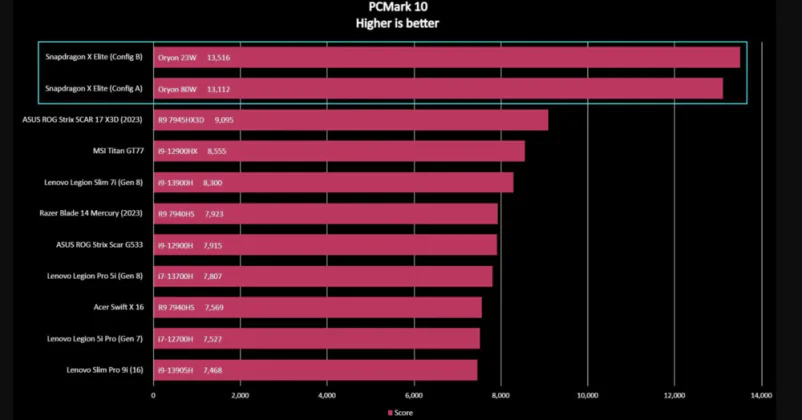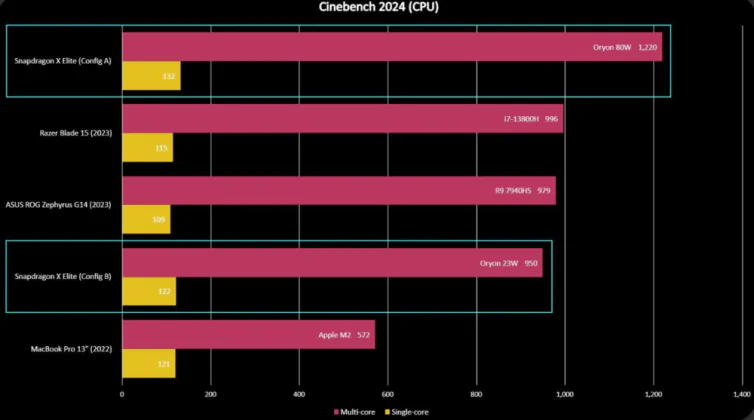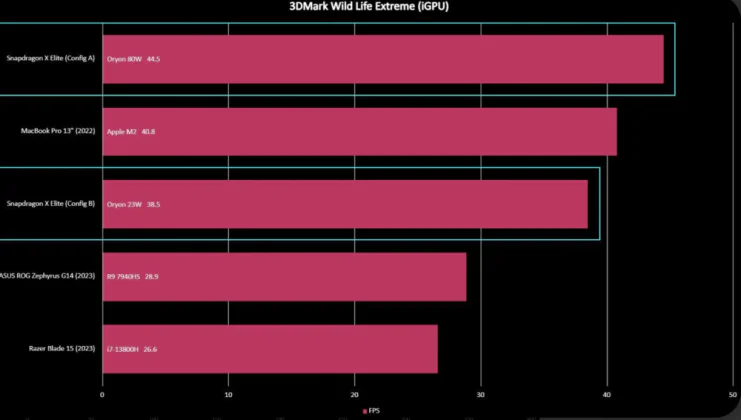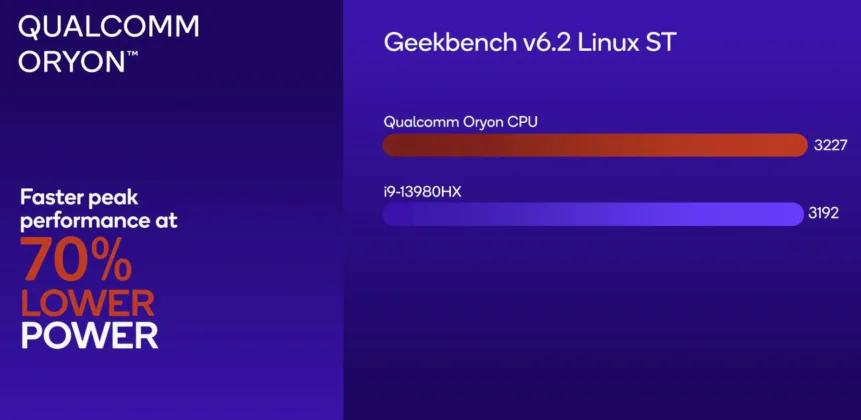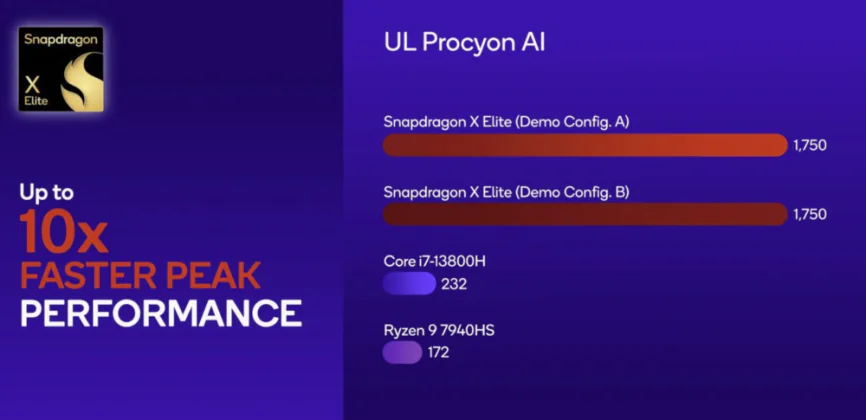© ROOT-NATION.com - Use of content is permitted with a backlink.
Qualcomm Snapdragon X Elite is the newest and most advanced ARM processor developed by Qualcomm for laptops. Should AMD, Apple, and Intel be worried?
Qualcomm is undoubtedly a well-known brand, but you typically associate it with smartphone processors rather than laptop processors. However, 2024 might be the year when everything changes, thanks to Qualcomm’s latest chipset: the Snapdragon X Elite.
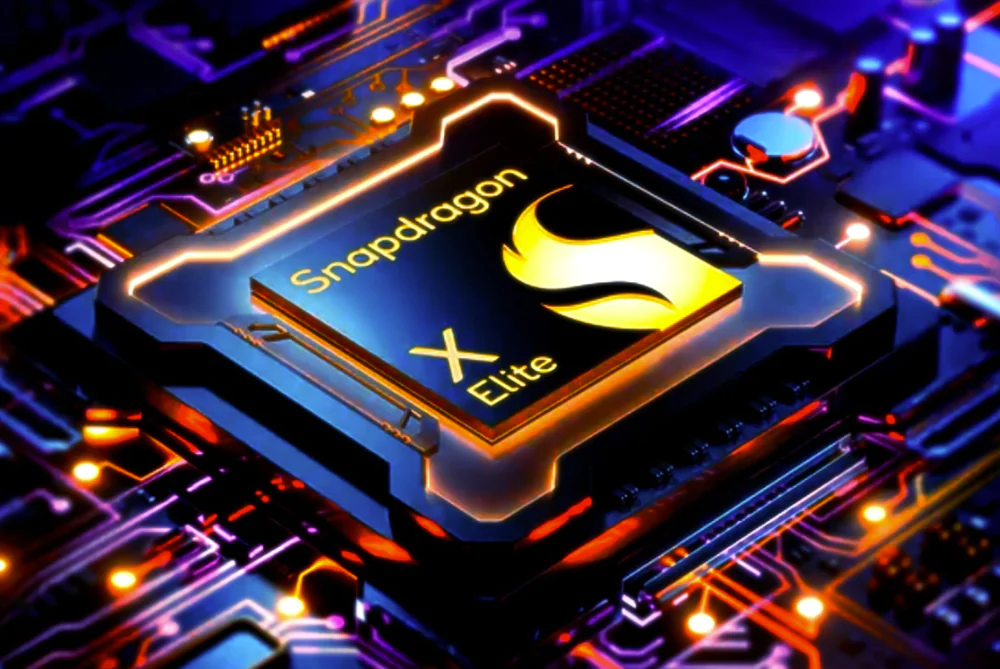
The ARM-based Snapdragon X Elite is poised to enhance Windows laptops in every way: from higher multi-core performance to more powerful AI capabilities and more efficient power consumption. With these advancements, Windows on ARM can finally compete with the Apple M3 MacBook and even with M4 devices in some aspects. The company has promised significant improvements in performance and energy efficiency, creating serious competition for the market leaders.
Read alsо: CSI Linux Distribution for Cyber Research Review
What is Qualcomm Snapdragon X Elite?
Qualcomm Snapdragon X (Elite and Plus) are new processors based on the ARM64 architecture, designed specifically for laptops. Long before their debut, they stirred a lot of excitement and were touted from the outset as a new benchmark in the world of processors.
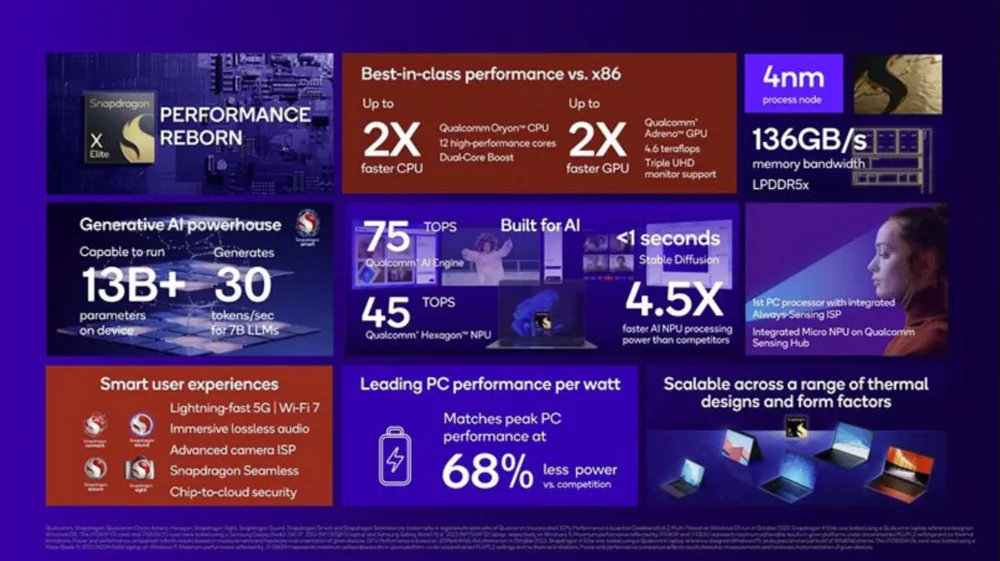
Qualcomm and its partners have placed a special emphasis on artificial intelligence. In this area, the manufacturer has nothing to be ashamed of, even amidst fierce competition. One could even go further and say that this is the long-awaited breath of fresh air in the laptop market. But was it necessary, and was it worth the wait? Let’s delve deeper into the technical specifications and capabilities of the latest Qualcomm Snapdragon X (Elite and Plus) processors.
CPU
The Qualcomm Snapdragon X Elite is equipped with a 12-core Qualcomm Oryon processor clocked at up to 3.8 GHz (with the capability to boost up to 4.3 GHz for two cores). The processor is built on TSMC’s 4-nanometer technology, significantly enhancing its performance and energy efficiency. This, in turn, positively impacts battery life, a crucial aspect for laptops.
GPU
The processor is complemented by the integrated Qualcomm Adreno GPU, delivering up to 4.6 TFLOPS of computational power in FP32 single-precision calculations. It supports the latest libraries (not just DirectX 11 and DirectX 12, but also Vulkan and OpenCL) and codecs (H.264, HEVC, AV1). This ensures a twofold increase in performance compared to the previous generation system.
The graphics processor can support a maximum of a 4K display with a refresh rate of 120 Hz and HDR10, three 4K displays with a refresh rate of 60 Hz and HDR10, and two 5K displays with a refresh rate of 60 Hz.
NPU
Moreover, the Snapdragon X Elite includes the Qualcomm Hexagon NPU for AI computations. This system is designed to accelerate AI processes and can perform 45 trillion operations per second (45 TOPS) in AI tasks. This is more than the recently released Apple M4 processor (up to 38 TOPS), although it should be noted that the M4 chip is only available in the iPad Pro, not in laptops like the new Snapdragon.
Communications
Regarding connectivity, the Qualcomm Snapdragon X Elite supports cutting-edge technologies such as Wi-Fi 7, Bluetooth LE 5.4, and the Snapdragon X65 5G modem, which offers speeds up to 10 Gbps. These advanced connectivity options ensure that this processor is ready for modern solutions.

Memory
The Qualcomm Snapdragon X Elite supports up to 64 GB of LPDDR5x RAM and various storage options, including SD 3.0 cards, NVMe via PCIe Gen. 4, and UFS 4.0.
Read also: What is Spatial Audio, How Does It Work, and How to Use It
Qualcomm Snapdragon X Elite performance and benchmarks
To assess the strength of the new ARM processors, I wanted to know how powerful this system is in real synthetic tests.
Performance tests have shown that the Snapdragon X Elite outperforms some leading Intel and Apple processors in various scenarios. For example, in single-threaded tests, the Snapdragon X Elite outperforms the Intel Core i9-13980HX, while consuming up to 70% less power (and 30% less compared to the Apple M2 Max).

In PCMark10 tests, the Snapdragon X Elite scored over 13000 points, making it one of the fastest mobile processors on the market. This processor also demonstrated its graphics prowess in the 3DMark WildLife tests, achieving excellent results. The performance in tests like Cinebench 2024 and Geekbench 6 is also noteworthy compared to powerful processors such as the AMD Ryzen 9 7945HX3D and 7940HS or the Intel Core i9-13900H.
What’s particularly noteworthy is not just the performance itself but its relationship with power consumption (in two configurations: TDP 80W and 23W).
And how do the new Snapdragons differ from the Apple M3 Pro and the Intel Ultra 7155H (Meteor Lake)? According to leaks from Geekbench 6, it looks like this:
- Snapdragon X Elite X1E-80: 2790 (single-core) and 14309 (multi-core)
- Snapdragon X Elite X1E-78: 2418 (single-core) and 14077 (multi-core)
- Snapdragon X Plus X1P-64: 2419 (single-core) and 13139 (multi-core)
- Intel Ultra 7 155H: 2300 (single-core) and 13000 (multi-core)
- Apple M3 Pro: 3200 (single-core) and 16000 (multi-core).
However, where the new Snapdragons shine is in tests related to artificial intelligence – at least, that’s what preliminary unofficial tests show. But we’ll still have to wait for the official release to learn more and confirm these results on independent sites.
Gaming performance on Qualcomm Snapdragon X Elite
In terms of gaming, the performance is comparable to AMD Ryzen processors with integrated Radeon 780M graphics chip. For an integrated processor, this is indeed very good performance, allowing, for example, playing Baldur’s Gate 3 at 30 fps or Control even at medium settings at 50 fps (which is important for the version with TDP 23W!) at low graphics settings in 1080p resolution.

Yet, we’re talking about a processor that isn’t intended for gaming. The system can deliver better performance results than Apple M2, but on the flip side, it also clearly falls short of the much more powerful Apple M2 Max.
Read also: How to Block Spam, Unwanted Calls, and Messages on iOS and Android
Snapdragon X Elite in three versions: Comparison
The Qualcomm Snapdragon X Elite is available in three processor versions, differing primarily in maximum clock frequency and boost mode capabilities. Here are the details for each version (from the strongest to the weakest):
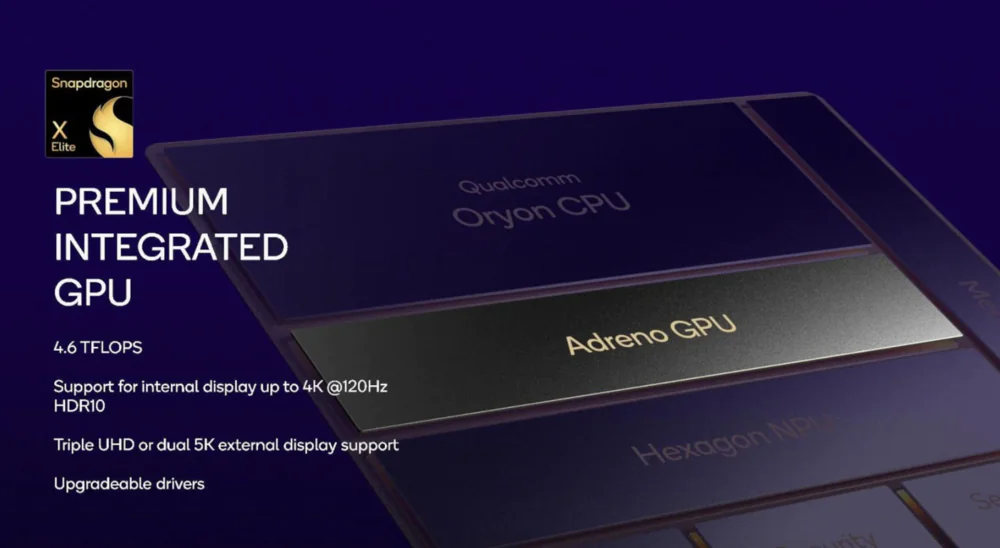
Snapdragon X Elite (X1E-84-100)
- CPU: Qualcomm Oryon, 12 cores, clock speed up to 3.8 GHz (boost up to 4.2-4.3 GHz for two cores) and 42 MB cache
- GPU: Qualcomm Adreno with computational power up to 4.6 TFLOPS
- NPU: Qualcomm Hexagon with computational power up to 45 TOPS
- Memory: LPDDR5x up to 64 GB, data transfer rate 8448 MT/s, and bandwidth 136 GB/s.
Snapdragon X Elite (X1E-80-100)
- CPU: Qualcomm Oryon, 12 cores, clock speed up to 3.4 GHz (boost up to 4.0 GHz for two cores) and 42 MB cache
- GPU: Qualcomm Adreno with computational power up to 3.8 TFLOPS
- NPU: Qualcomm Hexagon with computational power up to 45 TOPS
- Memory: LPDDR5x up to 64 GB, data transfer rate 8448 MT/s, and bandwidth 136 GB/s.
Snapdragon X Elite (X1E-78-100)
- CPU: Qualcomm Oryon, 12 cores, clock speed up to 3.4 GHz (without boost mode) and 42 MB cache
- GPU: Qualcomm Adreno with computational power up to 3.8 TFLOPS
- NPU: Qualcomm Hexagon with computational power up to 45 TOPS
- Memory: LPDDR5x up to 64 GB, data transfer rate 8448 MT/s, and bandwidth 136 GB/s.
The main differences between the three versions of the Snapdragon X Elite are related to the CPU clock speed and overclocking capabilities. The Snapdragon X Elite X1E-84-100 version is the most advanced, offering high clock speeds and overclocking capabilities. The Snapdragon X Elite X1E-80-100 and X1E-78-100 versions have lower maximum frequencies and limitations on boosting (or even the absence of boosting altogether), affecting their overall performance in certain programs, especially those that favor high clock speeds.
However, each of these versions still offers wide graphics, artificial intelligence, and connectivity capabilities. This makes them attractive options for various programs. Choosing the appropriate version depends on the specific needs of the user and the program’s requirements regarding CPU power.
Read also: Security Patch and Why Is It So Important?
Not only Elite, but also Snapdragon X Plus
Qualcomm has essentially released another, the most modest of the discussed variants of the Snapdragon X processor – with the Plus suffix. It’s still a very efficient processor, but it has fewer cores than its more powerful Elite counterparts.

Here are the specifications for the Snapdragon X Plus (X1P-64-100):
- CPU: Qualcomm Oryon, 10 cores, clock speed up to 3.4 GHz (without boost mode) and 42 MB cache
- GPU: Qualcomm Adreno with computational power up to 3.8 TFLOPS
- NPU: Qualcomm Hexagon with computational power up to 45 TOPS
- Memory: LPDDR5x up to 64 GB, data transfer speed of 8448 MT/s, and bandwidth of 136 GB/s
Despite its appearance, the Snapdragon X Plus is not much inferior – the difference mainly comes down to the number of cores, so in most multi-threaded programs, this model will perform only slightly worse.
Snapdragon X Elite and compatibility with games and applications
The Qualcomm Snapdragon X processors are not only adapted to work in various types of applications (for example, for professional use) but also for gaming. The new platform, based on the ARM64 architecture, has already raised a number of questions related to compatibility (which is correct), especially regarding gaming.

The manufacturer stated that games can be launched on Snapdragon Elite laptops in several ways:
- Native game launch (maximum performance; a port is required for ARM64 architecture).
- x86/x64 architecture emulation (slight performance decrease, but still close to maximum).
- ARM64EC hybrid program (Qualcomm system, libraries, and drivers work natively, while others are emulated, maintaining performance close to native).
According to Qualcomm representatives, “most Windows games should work” without the need for porting (some of them have already been or will be adapted to work with the ARM processor). However, no specific details or even data on the number of tested modern games were provided, but Qualcomm was expected to have tested the most popular ones from the Steam platform. Examples include games like Baldur’s Gate 3 (with a port for Mac) and Control.
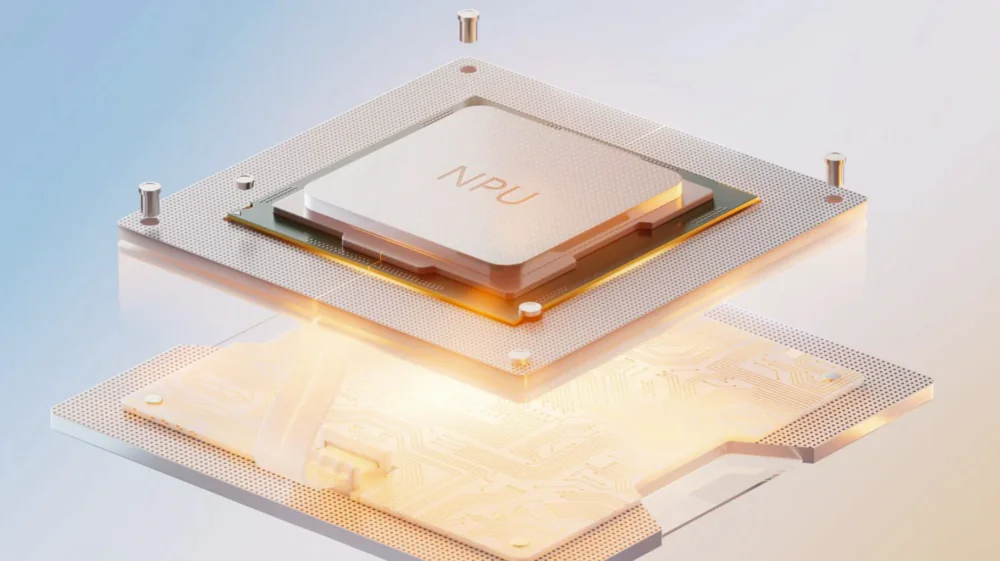
It’s worth noting that on laptops with Snapdragons, you won’t be able to play games with an anti-cheat system that operates at the kernel level. This includes popular online games like Valorant, Fortnite, Fall Guys, Apex Legends, PUBG, or Rainbow Six Siege. Adreno graphics drivers are prepared for DirectX 11 and 12, Vulkan, and OpenCL APIs with probable support for DirectX 9 and OpenGL libraries (up to version 4.6). However, for older APIs, this isn’t native support but a workaround using translation layers.
Read also: Main Differences Between LED, OLED, and QLED in TVs
Windows 11 with Copilot+PC on laptops with Qualcomm Snapdragon X Elite
All laptops with Snapdragon X Elite and Snapdragon X Plus processors run on the Windows 11 operating system, enriched with new intelligent features like Copilot+PC. You’ll find it convenient to use modern AI-based solutions on Copilot+ laptops, for example:
- Cocreator allows you to create and refine artificial intelligence images using simple text or graphic requests.
- Windows Studio Effects enhance the quality of video calls with creative AI filters and enhancements (such as automatic framing, eye contact, background blur, and portrait lighting).
- Windows Recall helps you find forgotten documents, emails, or even websites by simply describing how you remember them to locate the desired content.
- Copilot Assistant is an AI companion built into the system to assist you. Ask it a question and get an instant answer.
This is just a modest part of the solutions utilizing the capabilities of artificial intelligence in laptops with the Snapdragon Elite X processor and Windows 11 operating system.

It’s important to note that the strength of laptops with Snapdragon X and Windows 11 lies not only in the enhanced AI capabilities but primarily in the power of the NPU system for AI-related computations. Laptops with Snapdragon X systems are optimized for professional creative software to fully harness the power of the NPU processor, specialized for these types of tasks.

You can enhance or accelerate your work using software such as Adobe (Photoshop, Illustrator, Premiere Pro), DaVinci Resolve, CapCut, Cephable, or djay Pro.
Read also: Phi-3-mini – Microsoft’s Breakthrough in Artificial Intelligence?
Laptops with Snapdragon X Elite and Plus. When will the first devices be released?
The Qualcomm Snapdragon X Elite is a significant leap forward in ARM processors for Windows laptops. Its high performance, advanced AI capabilities, and energy efficiency make it a serious player in the market.
Will the new processor from Qualcomm impact the laptop market? The answer to this question is not yet clear. However, the new processors promise to be compelling and will compete not only with the already released Intel Meteor Lake and Apple M processors but also with the upcoming Intel Lunar Lake and AMD Strix Point processors planned for this year. This will be a very interesting competition, not only in the context of AI tasks.

One thing is certain: the Snapdragon X Elite and Plus processors have the potential to have a significant impact on the laptop market. Overall, if these processors can meet expectations and deliver the promised performance, they could significantly influence the laptop market by increasing the diversity of available devices and raising competition among manufacturers.
Read also:
- What is HDR in monitors and how to properly adjust it
- Transistors of the Future: New Era of Chips Awaits Us



